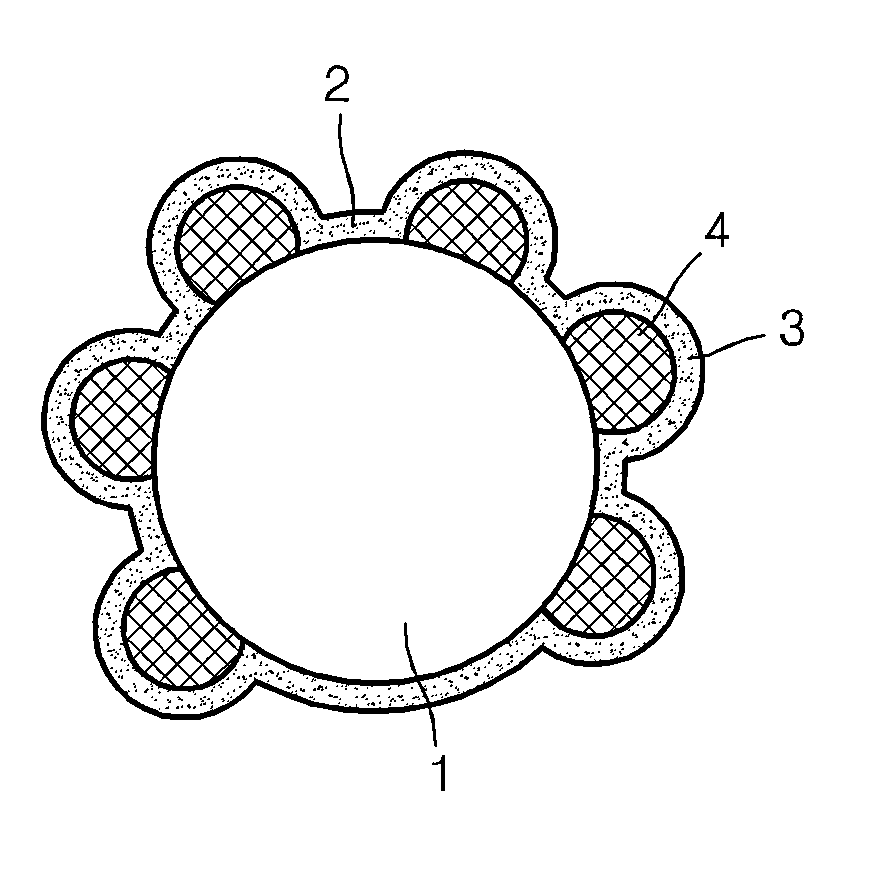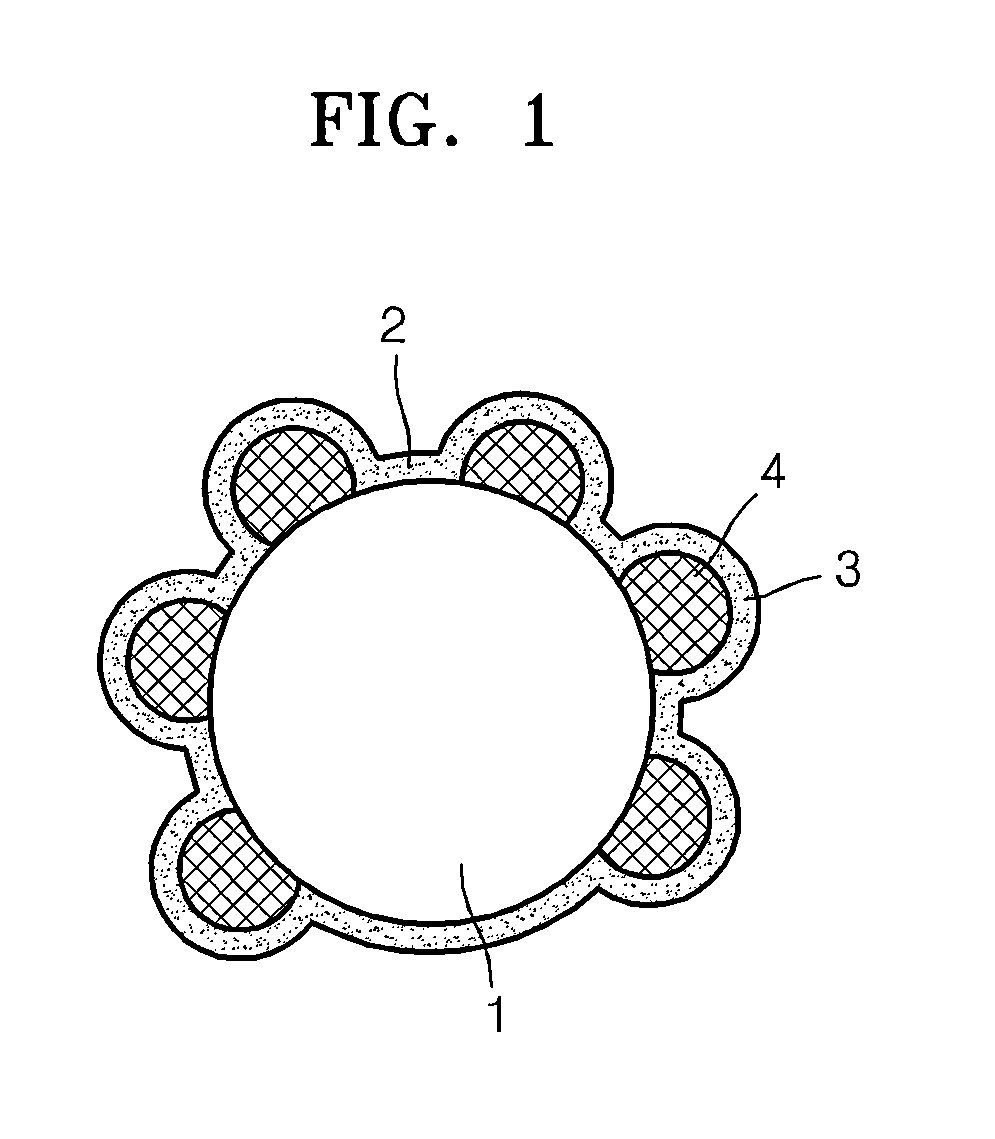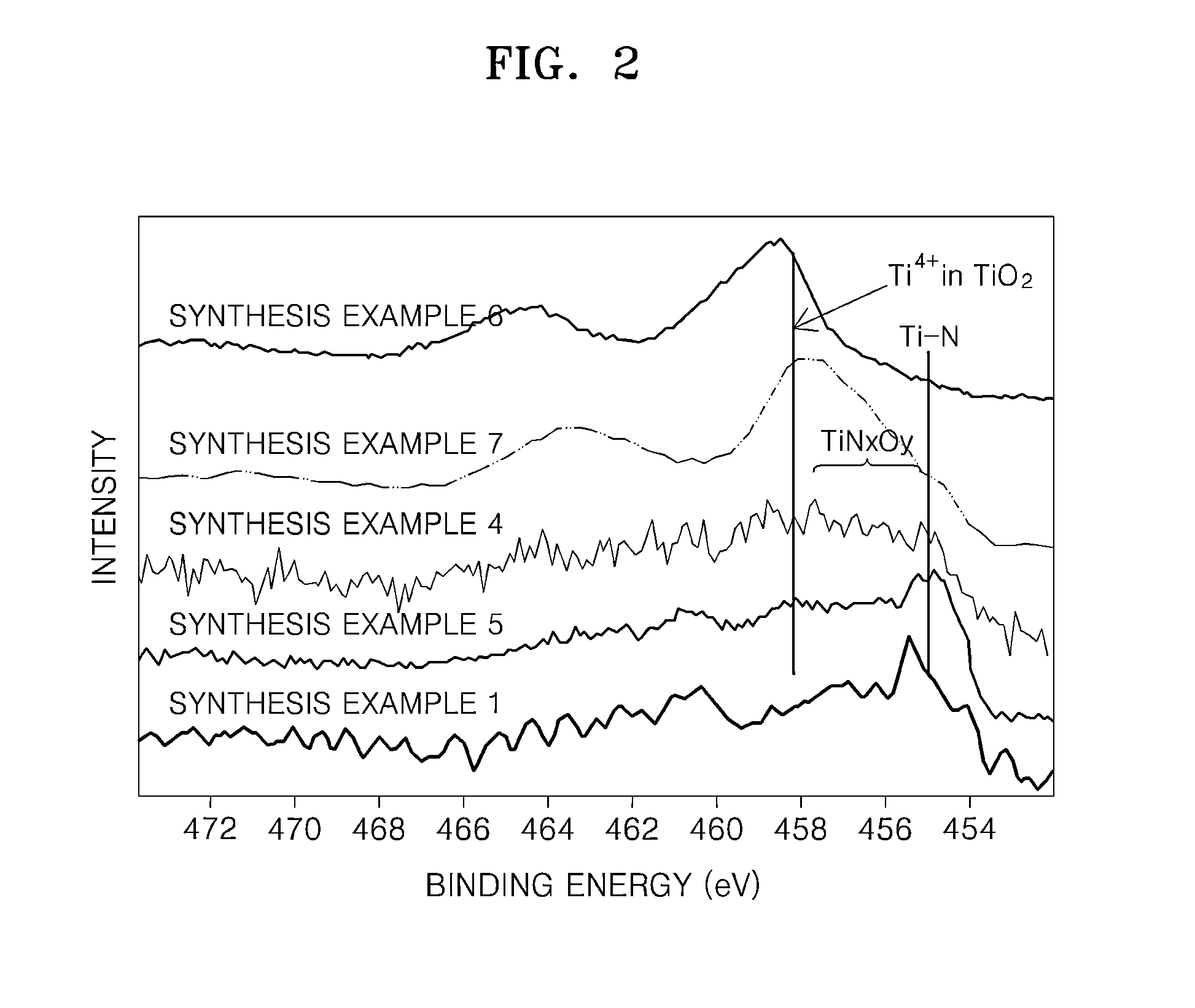Anode active material for lithium rechargeable battery, method of preparing the same, and lithium battery including the anode active material
a lithium rechargeable battery and anode active material technology, which is applied in the manufacture of final products, cell components, non-metal conductors, etc., can solve the problems of increasing the possibility of explosion, poor cycle characteristics, and unsatisfactory capacity of high-capacity lithium batteries, and achieve excellent initial efficiency and lifespan characteristics.
- Summary
- Abstract
- Description
- Claims
- Application Information
AI Technical Summary
Benefits of technology
Problems solved by technology
Method used
Image
Examples
synthesis example 1
[0079]1.8 grams (g) of silicon nanoparticles (Aldrich Company, a particle size of about 50 nm) and 0.2 g of lithium titanium oxide nanoparticles (Nanoamor Company) were mixed, sealed in an Ar atmosphere, and then milled and mixed for 300 minutes with a high-energy mechanical milling device (SPEX CertiPrep, 8000 M) to prepare a composite. The composite was heat treated at the temperature of 850° C. in a nitrogen atmosphere to prepare an anode active material.
synthesis example 2
[0080]0.8 g of the composite prepared according to Synthesis Example 1 and 6.78 g of an aqueous urea solution (20 wt %) were mixed in a beaker, followed by drying in an oven at the temperature of 90° C. The dried product was heat treated at the temperature of 850° C. under a nitrogen atmosphere to prepare an anode active material.
synthesis example 3
[0081]1.6 g of silicon nanoparticles (Aldrich Company, a particle size of 50 nm) and 0.4 g of lithium titanium oxide (Ishihara Company, about 10 μm) particles were mixed, sealed in an Ar atmosphere, and then milled and mixed for 300 minutes with a high-energy mechanical milling device (SPEX CertiPrep, 8000 M) to prepare a composite. The composite was heat treated at the temperature of 850° C. in a nitrogen atmosphere to prepare an active material.
PUM
| Property | Measurement | Unit |
|---|---|---|
| temperature | aaaaa | aaaaa |
| temperature | aaaaa | aaaaa |
| diameter | aaaaa | aaaaa |
Abstract
Description
Claims
Application Information
 Login to View More
Login to View More - R&D
- Intellectual Property
- Life Sciences
- Materials
- Tech Scout
- Unparalleled Data Quality
- Higher Quality Content
- 60% Fewer Hallucinations
Browse by: Latest US Patents, China's latest patents, Technical Efficacy Thesaurus, Application Domain, Technology Topic, Popular Technical Reports.
© 2025 PatSnap. All rights reserved.Legal|Privacy policy|Modern Slavery Act Transparency Statement|Sitemap|About US| Contact US: help@patsnap.com



